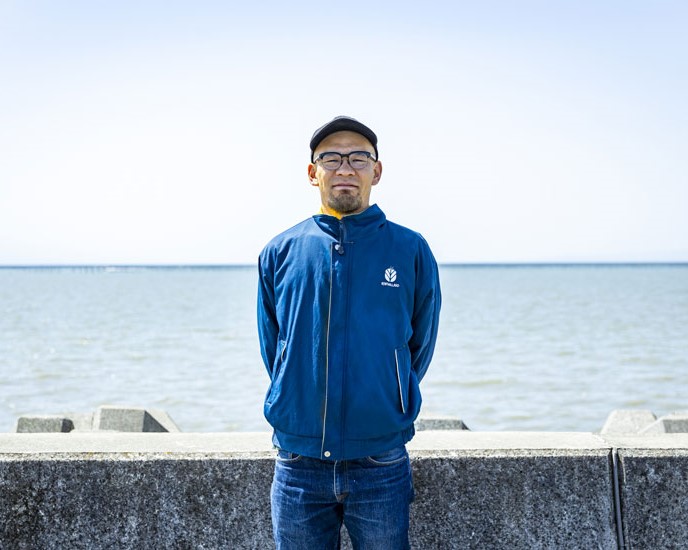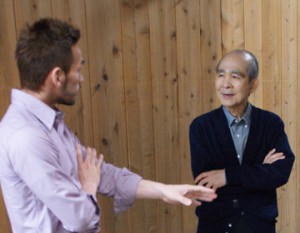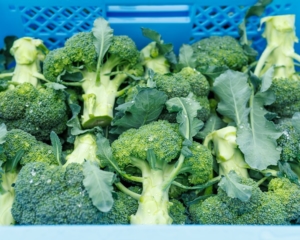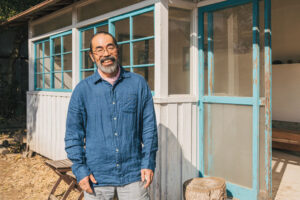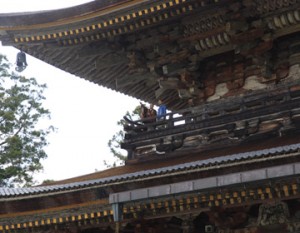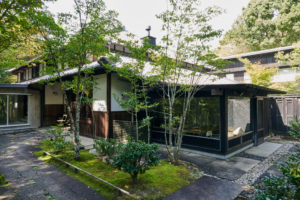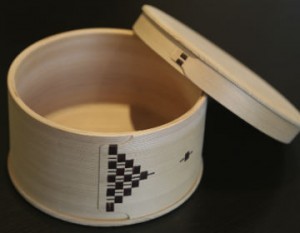Facing the Ariake Sea, Yanagawa City in Fukuoka Prefecture is known as a water town. Mr. Toyosaku Eguchi of “Hosaku Farm,” which has a farm in this scenic area, has launched the “Hosaku Wagyu” brand of black cattle named after his own name. We follow his passion for the brand, which he hopes will “enrich people’s hearts and minds” as well as his commitment as a fattening farmer who raises cattle with love.
The reason for running the ranch was because I was a rice farmer and had rice straw.

In the normal beef production and distribution process, beef calves are raised from mother cows, raised, and shipped by integrated production farms, or by fattening farms that purchase the calves and raise them until they are shipped as carcasses, which are then shipped to the market and purchased by wholesalers. The cattle are then purchased by wholesalers, who sell them to retailers, and so on, until they reach consumers.
At one time, Hosaku Farm also used to sell all of its cattle through this distribution channel. In 2021, the company launched the “”Hosaku Wagyu“” brand. The entire family has been supporting the ranch since the father’s generation, with Hosaku Eguchi in charge of production and his elder brother Koji in charge of sales.
The Eguchi family’s ranching business started with five Holsteins. The Eguchi family’s ranching business began with five Holsteins, dating back about 45 years ago.
The Eguchi family has been rice farmers for generations. At the time, the father, Masahiro, was selling rice straw from the farmland as roughage to livestock farmers. One day, he bought a calf, saying, “Since we have rice straw, let’s fatten up a cow ourselves. They started by fattening up a male Holstein, a dairy breed, as a beef cow.
Holsteins are widely recognized as a dairy breed, but surprisingly, the males are fattened as beef cattle.
At the time when Hosaku Farm was founded, male Holstein calves were available at a relatively low price compared to Wagyu cattle, so it was an easy breed to enter the cattle breeding business at that time.
Seven downfalls. The various problems that hit the livestock industry are breaking my heart. ……

After the start of fattening, the number of cattle was gradually increased, but in 1991, beef imports were liberalized. Realizing that they could not compete with foreign beef in the price war, they switched to F1 breeds (a crossbreed of dairy cattle such as Holsteins and beef cattle such as Japanese Black cattle), which were more expensive in the market. However, the livestock industry was hit by a series of problems, such as the BSE problem and a case of mislabeled beef. Masahiro was troubled by the recurring difficulties.
However, he made a decision that would bring him back to the top. With the expectation that demand for high-quality Wagyu beef would increase due to heightened awareness of food safety, he switched to fattening Wagyu black cattle more than 20 years ago. This was a turning point for him.
After graduating from university, Mr. Hosaku went on to study agriculture and returned to his hometown to succeed his father in the management of the ranch. Since Mr. Hosaku joined the ranch management, he won the Grand Champion in the Hakata Wagyu division of the “Fukuoka Prefecture Beef Cattle Producers’ Association Carcass Kyoshokai” in 2016, and in 2018, he also won the Gold Prize (Minister of Agriculture, Forestry and Fisheries Award) in the Wagyu division of the “Fukuoka Prefecture Meat and Livestock Kyoshokai” where livestock farmers from within the prefecture compete. The news that a young producer in his twenties had won this award took the industry by surprise. Through friendly rivalry between father and son, the family has grown to raise approximately 220 head of Wagyu black cattle.
Beef fattening “Hakata Wagyu,” Fukuoka Prefecture’s brand beef

The black Wagyu beef currently being raised by “ Hosaku Farm” is “Hakata Wagyu,” a brand of beef from Fukuoka Prefecture that was created in 2005. The background to the birth of Hakata Wagyu was the plunge in the market price of black Wagyu due to the BSE problem that had gripped the entire industry. The beef cattle market was in turmoil, partly due to fears of infection risk. The livestock industry in Fukuoka Prefecture was also in danger of decline. In an effort to revive the industry, livestock farmers in Fukuoka Prefecture united to create “Hakata Wagyu” in order to provide safe and delicious black Wagyu beef to the market.
Hakata Wagyu” is defined as Wagyu beef from calves purchased from Kyushu and raised for approximately 20 months on rice straw produced in the prefecture. The meat quality grade is grade 3 or higher. The meat is soft and juicy.
More than 90% of the “Hakata Wagyu” raised by “ Hosaku Farm” is A4 to A5 grade. In addition to its fine texture and other aesthetic qualities, the reason for its high reputation is that it contains more than 55% oleic acid, an unsaturated fatty acid that is said to be directly related to its deliciousness. It also has a good reputation for its melt-in-your-mouth flavor.
Bloodlines are important, but the feed is what makes the cow perform

In terms of raising good quality beef cattle, Hosaku says, “The ability (pedigree) of the cattle is important, but the quality and content of the feed is also important to bring out the best in the cattle,” he says. Hosaku Farm grows all of its own rice straw. In addition, the feed is changed according to the stage of growth: early, mid, and late season. In the first stage, they are fed more roughage and protein to build up their stomachs and develop the base of their muscles for the middle stage. In the middle period, the calorie content of the feed itself is increased in order to grow the muscle base. In the latter period, vitamin-rich feed is fed to control the degree of tern formation. The first priority in fattening is to keep the cattle healthy.
Common feeding methods that emphasize marbling often threaten the health of the cows and cause stress. However, at “Hosaku Farm,” cattle are fed with an emphasis on their health and growth. They spend time and love over a period of about 30 months, which is known as “long-term fattening,” to raise healthy, well-framed cattle with good meat and meat quality.
Feeding in divided portions facilitates digestion

To prevent indigestion, the cows are fed as often as eight times a day. This is a time-consuming but important process to prevent acidosis (accumulation of excess lactic acid in the stomach of cows) caused by concentrate feed (feed containing high protein content such as soybean meal and corn).
In addition, the feed is mixed just before each meal to prevent bacteria from mixing in. There was a time in the past when we mixed feed in advance to prioritize efficiency. But at that time, the cows often got sick. …… So we tried mixing the feed just before feeding, and the cows’ condition improved immediately. The cows responded to the amount of time and effort we put into them. The cows taught me that,” Hosaku recalls.
Aiming for a stress-free and carefree day for the cows

Mr. Hosaku also says, “I also place great importance on talking to the cows. It is said that many animals, such as cows, have a sense of absolute pitch, and they can recognize and remember the sound of a voice saying, “It’s time to feed. This triggers a conditioned reflex that stimulates saliva secretion and aids in smooth digestion.
Another important thing is a “regular rhythm of life. Feeding, cleaning the barn, brushing, ……, and so on, are all done at regular times. I am sure that both humans and cows feel healthy living in accordance with their natural body clocks.
When Mr. Hosaku strokes the cows’ faces, they look entranced and relaxed. They are earnest, honest, and affectionate. Mr. Toyosaku’s deep affection for the cows seemed to be transmitted to them as well.
Launched the “”Hosaku Wagyu“” brand, which is sold by the cattle farmers themselves.

When Hosaku Farm ships the Hakata Wagyu beef it raises to the auction, Enrich Corporation, a company specializing in distribution and sales and headed by Hosaku’s brother Koji, who is in charge of the sales division, participates in the auction and purchases a head.
After that, the meat is butchered, processed, and sold directly to customers. This all-inclusive brand, from production to sales, is named ”Hosaku Wagyu” and will be launched in 2021.
This will enable the company to add new value not only on the axis of market evaluation, which is based on the degree of sinewiness, but also on the axis of essential demand from consumers, which will lead to the realization of Toyosaku Farm’s desire to “deliver the deliciousness of the meat itself.
In order to further strengthen the latter axis, the company aims to communicate with consumers through the ”Hosaku Wagyu“ brand, understand their needs, and correct the discrepancy between value and demand that is currently occurring in the market.
The driving force behind the creation of this system is Koji, who has many years of experience in import/export of meat and domestic distribution at a trading company. The brothers are supporting the development of today’s “ Hosaku Farm” by leveraging their respective strengths and working hand in hand to ensure that the production and sales departments work together in a flat relationship, without exploiting what motivates and motivates the producers.
By communicating directly with our customers, we are able to communicate even the background of production, which is normally not available when purchasing beef. They are convinced of the reasons for the price and taste, and are able to buy only what they can truly rely on. We want to provide safe and secure food choices,” says Koji.
We want to deliver affluence through the taste of “ Hosaku Wagyu” beef

Another attractive feature of the “ Hosaku Wagyu” distribution is that the quality of hormones is also guaranteed to be from the “Hosaku Farm”. Normally, the producer of beef (red meat) can be identified by the individual identification number assigned to the meat, but for offal, the individual identification number is not reflected. In other words, even if the place of origin can be widely identified, it is difficult to know who raised the meat, in what environment, and how it was raised. For this and other reasons, the meat has recently received high praise from restaurants. In addition to Fukuoka Prefecture, restaurants in Tokyo and other parts of the Kanto region have begun to handle the beef, and the “Hosaku Wagyu” circle has begun to expand.
The “rating,” which is based on the degree of sinewiness, is of course important as an indicator in the distribution process. However, what we want to emphasize is the deliciousness of the meat itself. We would like to deliver this deliciousness to even more customers by adding the story behind the meat, which is the story of how and under what kind of environment the meat is raised,” said Hosaku, explaining his thoughts behind the brand.
We want to create spiritual richness through the Kuroge Wagyu beef raised on our own ranch. The “Hosaku Wagyu” brand, which embodies this desire, has just begun to take off. We still have a lot of work to do,” says Toyosaku, ”such as raising awareness and expanding sales channels. Mr. Hosaku is a very flexible and strong man who is working hard to take on new challenges while keeping his focus on recycling-oriented agriculture that has continued since his father’s generation, Masahiro’s, time. Behind his back is a man full of passion to pioneer the future.



